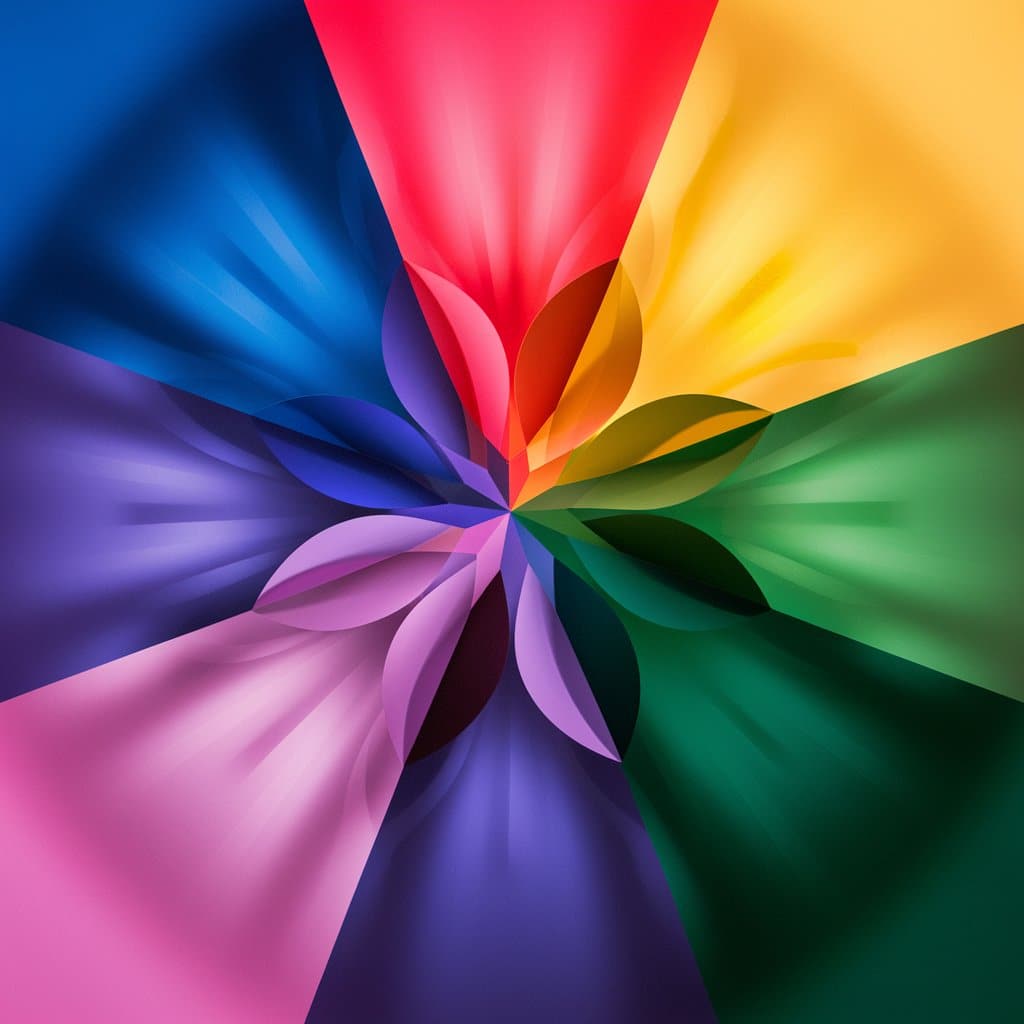Web designers are always looking for ways to make their websites stand out from the crowd. One way to achieve this is by harnessing the power of colour. Colour can create a powerful emotional response in people and can be used to convey a message or mood. In this guide, we will explore how web designers can use colour to create effective and visually appealing websites.
Colour is one of the most important design elements on a website. It can be used to highlight important information, create a sense of hierarchy, and guide the user’s eye around the page. Colour can also be used to create contrast, which can make certain elements stand out more. By understanding the psychology of colour, web designers can create websites that are not only visually appealing but also effective in achieving their goals.
In this guide, we will explore the different ways in which web designers can harness the power of colour. We will look at the different colour schemes that can be used, as well as the psychology of colour and how it can be used to create a certain mood or emotion. We will also explore the importance of contrast and how it can be used to create a visual hierarchy on the page. By the end of this guide, readers should have a better understanding of how to use colour effectively in web design.
Understanding the Basics of Colour
Colour is a crucial element in web design, and it can significantly impact the user experience. Understanding the basics of colour is essential for web designers to create visually appealing and effective websites.
Primary, Secondary, and Tertiary Colours
Colour theory is based on the colour wheel, which consists of primary, secondary, and tertiary colours. Primary colours are red, blue, and yellow, and they cannot be created by mixing other colours. Secondary colours are green, orange, and purple, and they are created by mixing two primary colours. Tertiary colours are a combination of a primary and a secondary colour.
Hue, Value, Tone, Shade, Tint, and Lightness
Hue is the actual colour, such as red, blue, or green. Value is the relative lightness or darkness of a colour, while tone refers to the intensity or strength of a colour. Shade is created by adding black to a colour, while tint is created by adding white to a colour. Lightness refers to the amount of light reflected by a colour.
RGB and CMYK
Web designers use RGB (Red, Green, Blue) and CMYK (Cyan, Magenta, Yellow, Key) colour models to create colours on the screen and in print, respectively. RGB is an additive colour model, where colours are created by adding light of different colours together. CMYK is a subtractive colour model, where colours are created by subtracting light of different colours.
Colour Combinations
Colour combinations are an important aspect of web design. Complementary colours are opposite each other on the colour wheel, and they create a high-contrast, vibrant effect. Analogous colours are next to each other on the colour wheel, and they create a harmonious, calming effect. Triadic colours are evenly spaced on the colour wheel, and they create a balanced, dynamic effect.
In conclusion, understanding the basics of colour is essential for web designers to create visually appealing and effective websites. By using the colour wheel, colour theory, and colour models, web designers can create beautiful colour combinations that enhance the user experience.
The Psychology of Colour
Colour can have a profound impact on human perception, emotions, and feelings. Understanding the psychology of colour is essential for web designers who want to harness the power of colour in their designs.
Colour psychology is the study of how colour affects human behaviour. Different colours can evoke different emotions, moods, and feelings. Warm colours like red, orange, and yellow can create a sense of warmth and energy, while cool colours like blue, green, and purple can create a sense of calmness and tranquillity.

Human perception of colour can also be influenced by cultural and personal experiences. For example, in many cultures, white is associated with purity and innocence, while in some cultures, white is associated with death and mourning.
Colour can also affect how a website is perceived. The use of bright colours can create a sense of playfulness and fun, while muted colours can create a sense of sophistication and elegance.
Web designers must be mindful of the impact of colour on their audience and choose colours that align with the website’s purpose and message. By understanding the psychology of colour, web designers can create designs that effectively communicate the intended message and evoke the desired emotions and feelings in their audience.
The Role of Colour in Web Design
Colour plays a crucial role in web design, as it can influence the user’s perception of a website and its associated brand. A well-designed website should use colour to create a visually appealing and cohesive experience that aligns with the brand’s identity, recognition, and personality.
Effective use of colour can improve the website’s usability, online experience, navigation, readability, communication, attention, and action. It can also influence consumer behaviour and decision-making, as the first impression and overall satisfaction of a website can be significantly affected by its colour scheme.
Web designers must carefully select colours that complement each other, align with the brand’s identity, and evoke the desired emotions and responses from the user. They must also consider the cultural and psychological associations of colours, as different cultures and individuals may have varying perceptions and reactions to certain colours.
To ensure the website’s accessibility and usability, designers must also consider the contrast and readability of the colour scheme, especially for users with visual impairments. They can use tools such as colour contrast checkers to ensure that the website meets the Web Content Accessibility Guidelines (WCAG).
In summary, the role of colour in web design is essential for creating a visually appealing, cohesive, and effective website that aligns with the brand’s identity and influences the user’s perception and behaviour. A well-designed colour scheme can improve the website’s usability, online experience, navigation, readability, communication, attention, and action, while also considering accessibility and cultural associations.
Choosing the Right Colours
Choosing the right colours is an essential aspect of web design. Colour choice can make or break a website, so it’s important to get it right. A good colour palette can create a sense of harmony and balance, while a bad one can be jarring and unappealing.
When selecting colours, it’s important to consider the target audience and the website’s purpose. For example, a website targeting children may use bright, bold colours, while a website targeting professionals may use more muted, neutral colours.
One popular method of choosing colours is by using a colour scheme. A colour scheme is a set of colours that work well together and create a harmonious effect. There are several types of colour schemes, including analogous, complementary, triadic, and monochrome.
Analogous colours are colours that are next to each other on the colour wheel. They create a sense of harmony and work well together. Complementary colours, on the other hand, are colours that are opposite each other on the colour wheel. They create a sense of contrast and can be used to draw attention to certain elements on a website.
Triadic colours are three colours that are evenly spaced on the colour wheel. They create a sense of balance and can be used to create a hierarchy of information on a website. Monochrome colour schemes use different shades of the same colour. They create a sense of unity and can be used to create a clean, modern look.
When selecting colours, it’s also important to consider warm and cool colours. Warm colours, such as red, orange, and yellow, create a sense of energy and excitement. Cool colours, such as blue, green, and purple, create a sense of calm and relaxation.
In addition to considering the colour scheme, it’s also important to consider the hierarchy of colours. Certain colours can be used to draw attention to certain elements on a website. For example, using a bright, bold colour for a call-to-action button can help draw attention to it.
Finally, it’s important to consider the personality of the website. Different colours can convey different emotions and personalities. For example, using black can create a sense of sophistication and elegance, while using bright, bold colours can create a sense of playfulness and fun.
Overall, when choosing the right colours for a website, it’s important to consider the target audience, the purpose of the website, and the personality of the website. By using a colour scheme, considering warm and cool colours, and creating a hierarchy of colours, web designers can create a visually appealing and effective website.
The Science of Colour Combinations
Colour combinations play a significant role in web design. Understanding the science behind colour combinations can help web designers create visually appealing and effective websites.
Contrast is a crucial aspect of colour combinations. It refers to the difference between the lightness and darkness of colours. High contrast can make text and images stand out, while low contrast can make them blend in. Designers can use contrast to create a visual hierarchy, making important elements more prominent.
Saturation and intensity are also essential components of colour combinations. Saturation refers to the purity of a colour, while intensity refers to the brightness or dullness of a colour. Combining colours with different levels of saturation and intensity can create a visually interesting and balanced design.
The science behind colour combinations also involves understanding the relationships between colours. The colour wheel is a useful tool that can help designers choose complementary or analogous colours. Complementary colours are opposite each other on the colour wheel and create a high-contrast and vibrant effect when used together. Analogous colours are adjacent to each other on the colour wheel and create a harmonious and calming effect when combined.

Web designers can use colour combinations to create a visual hierarchy, guiding the user’s eye to the most important elements on the page. By using contrasting colours, designers can make important elements stand out, while using analogous colours can create a cohesive and calming design.
In conclusion, understanding the science of colour combinations is essential for web designers to create visually appealing and effective websites. By using contrast, saturation, intensity, and the relationships between colours, designers can create a visually interesting and balanced design that guides the user’s eye to the most important elements on the page.
The Impact of Colour on Branding and Identity
Colour plays a significant role in creating a brand’s identity and recognition. The use of colours can evoke emotions and influence a brand’s personality. It is essential to understand the impact of colours on branding and identity to create an effective brand strategy.
Branding
Branding is the process of creating a unique name, design, and image that identifies and differentiates a product or service from its competitors. Colour is a crucial element in branding as it helps to create a visual identity that is easily recognisable. A brand’s colour palette should be consistent across all marketing materials, from the logo to the website design.
Brand Identity
Brand identity is the visual representation of a brand’s personality. It includes the logo, colour palette, typography, and other design elements that contribute to the brand’s recognition. The use of colours in brand identity can evoke specific emotions and influence a brand’s personality. For example, blue is often associated with trust and professionalism, while red is associated with passion and excitement.
Brand Recognition
Brand recognition is the ability of consumers to identify a brand by its visual elements, such as the logo and colour palette. The use of consistent colours in branding and identity can help to increase brand recognition. When consumers see a brand’s colours, they can quickly associate them with the brand and its products or services.
Brand Personality
A brand’s personality is the set of human characteristics that are associated with the brand. Colours can play a significant role in shaping a brand’s personality. For example, a brand that uses bright, bold colours may be seen as energetic and fun, while a brand that uses muted, neutral colours may be seen as sophisticated and elegant.
Values
Colours can also be used to communicate a brand’s values. For example, a brand that values sustainability may use green in its branding and identity to represent its commitment to the environment. Similarly, a brand that values innovation may use bright, bold colours to represent its forward-thinking approach.
In conclusion, the impact of colour on branding and identity cannot be overstated. It is essential to understand the emotional and psychological associations that colours can evoke and use them strategically to create an effective brand strategy. A consistent colour palette across all marketing materials can help to increase brand recognition and create a strong brand identity.
Colour and Typography
Colour and typography are two of the most important elements in web design. The use of colour can have a significant impact on the overall look and feel of a website, while typography can affect the readability and visual hierarchy of the content.
When it comes to colour, it is important to consider both the emotional and psychological impact it can have on the user. Different colours can evoke different emotions, so it is essential to choose colours that align with the website’s purpose and target audience. For example, red can convey a sense of urgency or excitement, while blue can create a feeling of calmness or trust.
In terms of typography, it is crucial to choose fonts that are easy to read and align with the website’s overall design. The use of hierarchy is also essential in typography, as it can help guide the user’s eye and create a visual hierarchy of information. This can be achieved through the use of font size, weight, and style.
Readability is another critical factor to consider when it comes to typography. The use of appropriate line spacing, margins, and contrast can significantly impact the readability of the content. It is important to ensure that the text is easy to read, even on different devices and screen sizes.
Overall, the use of colour and typography can significantly impact the user’s experience on a website. By considering the emotional and psychological impact of colour and the readability and visual hierarchy of typography, web designers can create engaging and user-friendly websites.
Colour and Accessibility
Colour is an essential tool for web designers to create visually appealing websites. However, designers must also consider the accessibility of their designs to ensure that everyone, including people with disabilities, can use and enjoy the website.
One important aspect of colour accessibility is contrast. Low contrast between text and background can make it difficult for people with visual impairments to read the content. Designers should aim for a contrast ratio of at least 4.5:1 for normal text and 3:1 for large text. There are many online tools available to check the contrast ratio of colours.
Another aspect of colour accessibility is colour blindness. Approximately 8% of men and 0.5% of women have some form of colour blindness, making it difficult for them to distinguish between certain colours. Designers should avoid using colour as the only means of conveying information and should provide alternative text or symbols to ensure that the content is understandable to everyone.

In addition to contrast and colour blindness, designers should also consider the readability of text. The use of too many colours or bright colours can be distracting and make it difficult to read the content. Designers should use a limited colour palette and choose colours that complement each other and enhance the readability of the text.
Overall, designers must strike a balance between aesthetics and accessibility when using colour in their designs. By considering the contrast, colour blindness, and readability of text, designers can create websites that are visually appealing and accessible to everyone.
Practical Tips for Implementing Colour in Web Design
Implementing colour in web design can be a daunting task for even the most experienced designers. However, by following some practical tips, designers can create a cohesive and attractive website that has a strong emotional impact on the users.
Start with a Bold Colour
Choosing a bold colour for the website’s primary colour can help attract users and make the site memorable. Designers should consider the website’s purpose and target audience when selecting the primary colour. For example, a children’s toy website may use bright, playful colours, while a professional services website may use more muted and sophisticated colours.
Use a Cohesive Colour Scheme
Designers should use a cohesive colour scheme throughout the website to create a polished and professional look. A cohesive colour scheme means using colours that complement each other and create a unified look. Designers can use tools such as Adobe Color to create a colour scheme that works well together and ensures that the website looks visually appealing.
Consider Emotional Impact
Colour can have a significant impact on the user’s emotions and behaviour. For example, blue is often associated with trust and reliability, while red is associated with passion and excitement. Designers should consider the website’s purpose and select colours that evoke the desired emotions in the user.
Recommendations for Using Colours
Here are some recommendations for using colours in web design:
- Use a maximum of three or four colours to avoid overwhelming the user.
- Use high contrast colours for text and background to ensure readability.
- Use hex codes to ensure consistency across the website.
- Test the website’s colour scheme on different devices to ensure that it looks good on all platforms.
By following these practical tips, designers can create a visually appealing website that has a strong emotional impact on the user.







